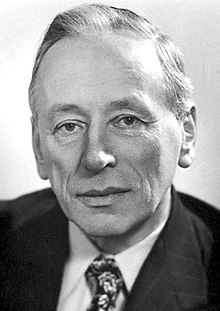Fritz Zernike
| Frits Zernike | |
|---|---|

Frits Zernike (1888–1966)
|
|
| Born | Frits Zernike 16 July 1888 Amsterdam, Netherlands |
| Died | 10 March 1966 (aged 77) Amersfoort, Netherlands |
| Nationality | Netherlands |
| Fields | Physics |
| Institutions | Groningen University |
| Alma mater | University of Amsterdam |
| Doctoral students | Christoffel Bouwkamp Herman de Boer Bernard Nijboer |
| Known for |
Ornstein-Zernike equation Zernike polynomials Phase contrast microscopy |
| Influences | Jacobus Cornelius Kapteyn |
| Notable awards | Rumford Medal (1952) Nobel Prize for Physics (1953) Fellow of the Royal Society |
Frits Zernike (Dutch pronunciation: [frɪts ˈzɛrnikə]; 16 July 1888 – 10 March 1966) was a Dutch physicist and winner of the Nobel Prize for physics in 1953 for his invention of the phase-contrast microscope.
Frits Zernike was born on 16 July 1888 in Amsterdam, Netherlands to Carl Frederick August Zernike and Antje Dieperink. Both parents were teachers of mathematics, and he especially shared his father's passion for physics. He studied chemistry (his major), mathematics and physics at the University of Amsterdam.
In 1912, he was awarded a prize for his work on opalescence in gases. In 1913, he became assistant to Jacobus Cornelius Kapteyn at the astronomical laboratory of Groningen University. In 1914, he was responsible jointly with Leonard Salomon Ornstein for the derivation of the Ornstein-Zernike equation in critical-point theory. In 1915, he obtained a position in theoretical physics at the same university and in 1920 he was promoted to full professor of theoretical physics.
In 1930, Zernike was conducting research into spectral lines and discovered that the so-called ghost lines that occur to the left and right of each primary line in spectra created by means of a diffraction grating, have their phase shifted from that of the primary line by 90 degrees. It was at a Physical and Medical Congress in Wageningen in 1933 that Zernike first described his phase contrast technique in microscopy. He extended his method to test the figure of concave mirrors. His discovery lay at the base of the first phase contrast microscope, built during World War II.
...
Wikipedia
